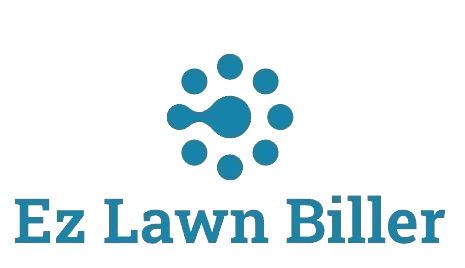Optimize your lawn care business by maximizing efficiency and profitability with effective route planning and management strategies.
How to Optimize Routes for Your Lawn Care Business
Routing optimization is a crucial aspect of running a successful lawn care business. With increasing competition and the need for efficiency, optimizing your routes not only saves time and fuel costs but also enhances customer satisfaction. In this blog post, we will explore various strategies for optimizing routes in your lawn care business, delve into the importance of route optimization, and provide practical tips to implement these strategies effectively.
In the competitive world of lawn care, every minute counts. As service demands rise, the need for efficient route planning becomes even more critical. A well-optimized route means your teams can service more clients in less time, reducing operational costs and boosting profits. This article will cover the significance of route optimization, techniques for effective planning, and how modern software can assist you in streamlining your daily operations.
By the end of this post, you’ll have a comprehensive understanding of how to implement route optimization in your lawn care operations effectively.
The Importance of Route Optimization
Effective route optimization can drastically impact your lawn care business. According to recent statistics, companies that prioritize route optimization see up to a 30% reduction in fuel costs and a significant increase in customer satisfaction. This is particularly fascinating considering the rising fuel prices and the necessity for businesses to remain competitive.
Moreover, optimizing routes can lead to increased productivity. Lawn care technicians can complete more jobs in a single day, leading to higher revenue without the need to extend working hours or hire additional staff. For instance, if your team can service ten properties instead of eight in a day due to optimized routing, this directly translates to increased earnings.
Furthermore, optimizing routes allows for better time management. For lawn care businesses, time is of the essence. Effective routing enables technicians to arrive at their destinations promptly, ensuring that customers are satisfied with the timeliness of service—an essential factor in customer retention.
Understanding Route Optimization Techniques
There are several techniques that lawn care businesses can implement to optimize their routes effectively. Some of the most common methods include using mapping software, analyzing customer locations, and considering service frequency. By employing these strategies, you can create efficient daily schedules for your team.
Using mapping software is one of the most effective ways to optimize routes. Programs specifically designed for lawn service companies can analyze traffic patterns, adjust for road conditions, and provide the fastest routes between service locations. This can save significant time and fuel.
Analyzing customer locations plays a crucial role in route planning. By grouping service appointments based on geographical areas, you can minimize travel time between jobs. For example, scheduling all clients in one neighborhood on the same day reduces the miles driven and maximizes productivity. Additionally, consider service frequency; regular clients can be grouped together to create a consistent schedule, further improving efficiency.
Leveraging Technology: Lawn Service Software
Investing in lawn service software can significantly enhance route optimization. Tools like [Lawn Biller Software](https://ezlawnbiller.com/) not only automate billing but also help in planning routes effectively. With features that allow you to input customer addresses and schedule jobs, these programs can generate optimal routes based on the criteria you set.
Moreover, mobile applications allow technicians to access their schedules and routing information on the go. This flexibility means that if a last-minute appointment arises or a job needs to be rescheduled, routes can be adjusted in real-time without causing major disruptions.
These technologies allow for better data collection and analytics. By tracking job completion times and travel distances, you can continually refine your routing strategies for even greater efficiency. Regular analysis of this data can reveal trends that help in predicting busy periods and adjusting schedules accordingly.
Implementing Best Practices for Route Optimization
To maximize the benefits from route optimization, consider adopting some best practices. First, maintain clear communication with your team. Ensure that your technicians understand the importance of following the optimized routes, as deviations can lead to inefficiencies.
Second, regularly review and update your routes. Traffic patterns change, and new clients can affect established routes. By periodically reassessing your routing strategies, you can adapt to new conditions and continue to optimize your operations.
Lastly, seek feedback from your team. Your technicians are on the front lines and can provide valuable insights into the practicality of the routes. Encourage them to share their experiences and suggestions for improvement, which can lead to more effective route planning.
Exploring Urban Landscapes: Route Optimization in Cities
When optimizing routes in urban areas, unique challenges arise. Cities like New York, Los Angeles, and Chicago present dense populations, heavy traffic, and numerous regulations that can complicate route planning. However, with effective strategies, lawn care businesses can still optimize their service delivery.
In New York City, for instance, the diverse neighborhoods and high traffic volumes require meticulous planning. Using software that factors in real-time traffic updates can help lawn care providers navigate these challenges effectively. By scheduling services during off-peak hours or utilizing local knowledge to avoid congested areas, companies can enhance their efficiency.
In Los Angeles, the vast distances between neighborhoods can pose a challenge. However, by clustering jobs in close proximity, lawn care providers can minimize travel time and maximize productivity. Leveraging tools like [Lawn Biller Software](https://ezlawnbiller.com/) can assist in creating these clusters based on historical service data and customer preferences.
Rural Routes: Unique Considerations for Lawn Care Businesses
On the other hand, rural areas present their own set of challenges for lawn care businesses. Long distances between clients mean that route optimization must account for more than just traffic—it should also consider fuel efficiency and time management.
For example, a lawn care company servicing areas outside of Denver may find that scheduling jobs sequentially based on geographic proximity is key. This not only reduces fuel costs but also ensures that technicians are not driving back and forth across large distances unnecessarily.
Rural routes can also benefit from the use of route optimization software, which allows for planning based on service frequency. By establishing regular service schedules for rural clients, companies can streamline their operations and ensure consistent revenue streams.
Maximizing Customer Satisfaction through Route Optimization
Customer satisfaction is at the heart of any successful lawn care business. Optimizing routes directly contributes to enhanced customer experiences. When services are delivered timely and efficiently, clients are more likely to be satisfied with the work performed and remain loyal to your business.
Moreover, by reducing the time spent on the road, your team can dedicate more time to providing quality service. This attention to detail can lead to glowing reviews and recommendations, crucial for growing your client base through word-of-mouth marketing.
Additionally, automated communication through lawn service apps can keep clients informed about arrival times and any changes to their schedules. This transparency builds trust and enhances the overall customer experience, leading to higher retention rates.
Conclusion
In conclusion, optimizing routes for your lawn care business is an essential strategy for improving efficiency, reducing costs, and enhancing customer satisfaction. By employing effective techniques like using mapping software, analyzing customer locations, and leveraging technology, you can significantly streamline your operations.
As we’ve discussed, the importance of route optimization cannot be overstated. It not only impacts your bottom line but also shapes your relationship with your customers. By implementing best practices and continuously assessing your strategies, your lawn care business can thrive in an increasingly competitive market.
Now is the time to take action. Consider exploring solutions like [Lawn Biller Software](https://ezlawnbiller.com/) to assist you in your journey toward route optimization. Don’t let inefficient routing hold you back—optimize your routes today and watch your business flourish!




